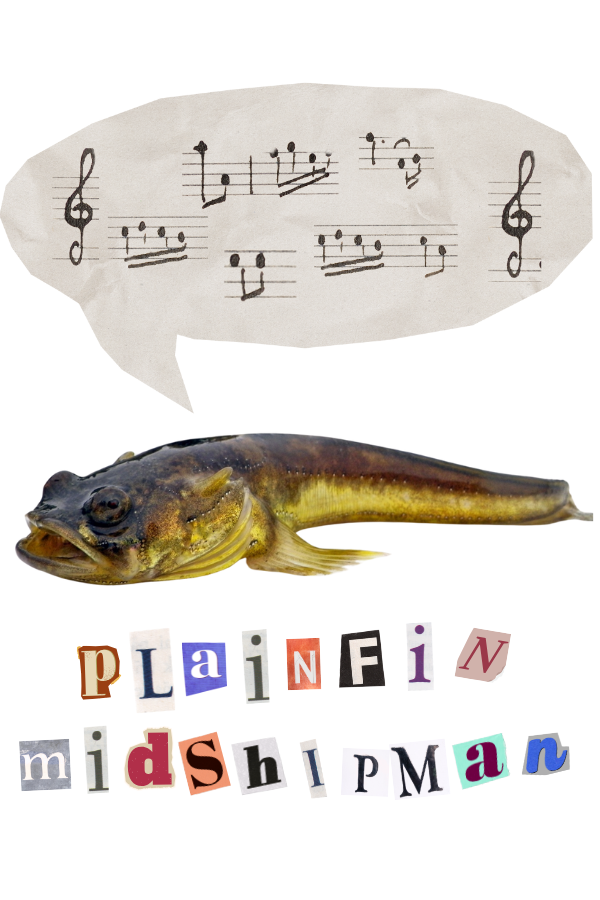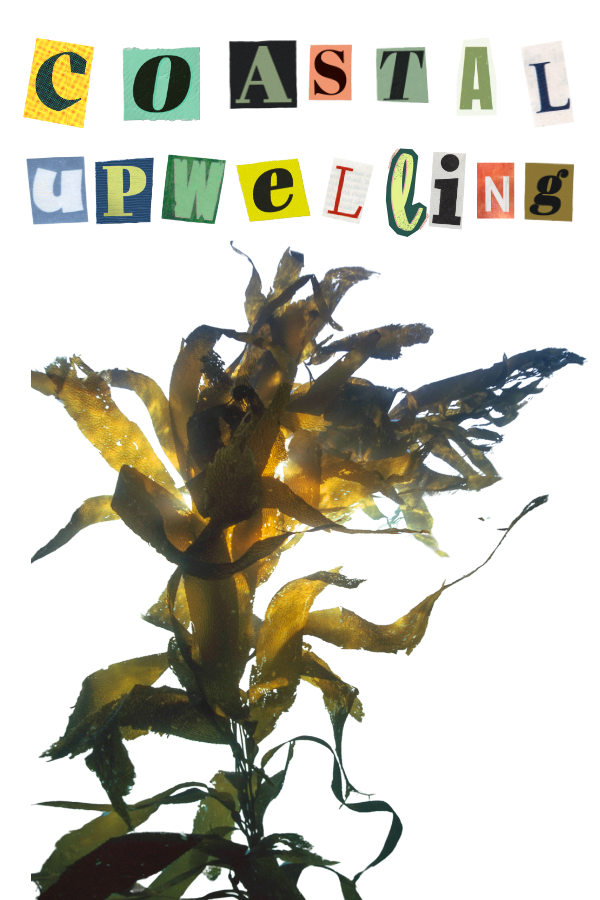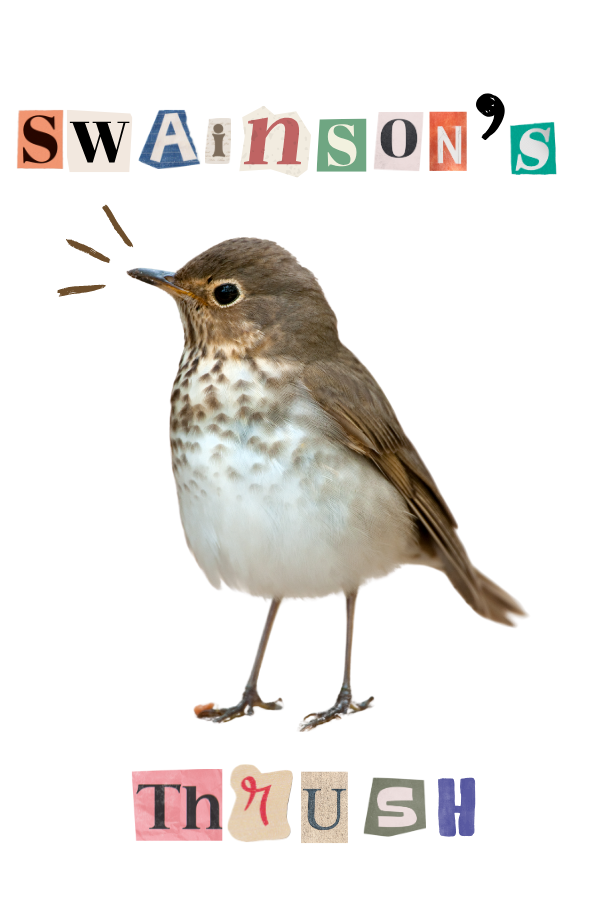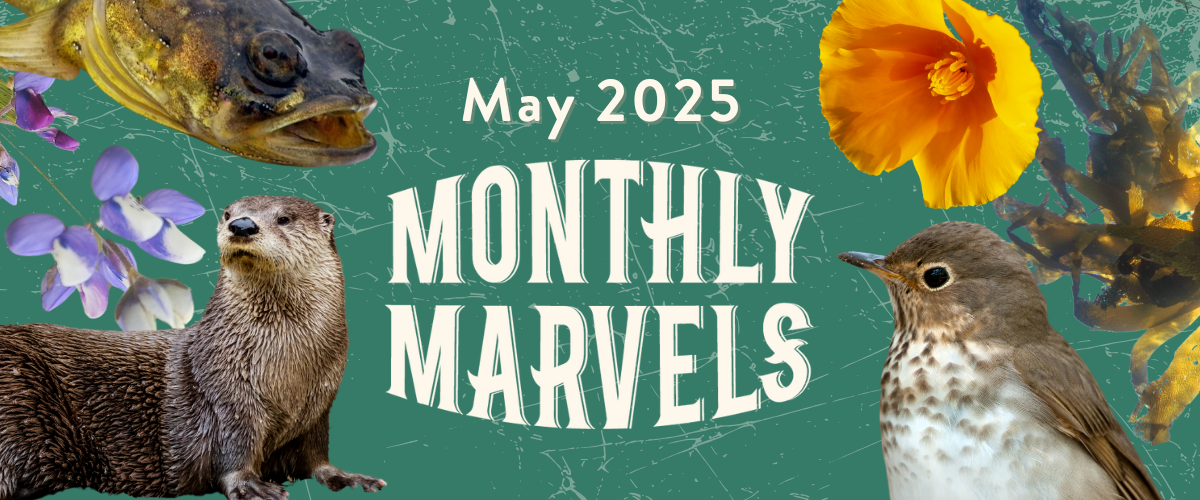Singing fish? A springtime color duet? Illusory songsters? Point Reyes’ terrestrial and aquatic landscapes are flourishing with unique wonders this May. Read on to learn about a selection of these marvels, and how you can experience them for yourself.
Throughout May:
The Midshipman’s Song
Along the Point Reyes coast, you may hear an odd, monotonous hum, described by some as “a drone that’s loud enough to wake someone who is fast asleep.” The suspect? A long, fanged fish—the plainfin midshipman (Porichthys notatus).
By rapidly contracting their swim bladders, these bottom-dwelling toadfish compete to produce the most alluring call, with the goal of attracting females to lay eggs in the nests they’ve pre-constructed underneath large intertidal rocks. In spring, the males’ unique noise-producing muscles become stronger, and females’ ear structure changes to allow them to better hear their suitors’ songs. Smaller “sneaker” males, who can only produce mere grunts, must take another approach—they disguise themselves as females and secretly fertilize eggs while the parental males are distracted with their singing performances.
See and hear a plain midshipman singing in this video by Science News. Recordist Cheryl Leonard also recorded what is likely a plain midshipman singing as part of a long-term project to map Point Reyes sounds. Beware! Some might find the song to be rather…rude.


Throughout May:
An Upwelling Affair
This month, you might notice a northwesterly breeze attempting to snatch your hat. These sneaky winds are also tugging the ocean’s warm surface waters offshore, creating an opportunity for cold, nutrient-rich water to be drawn toward the Point Reyes coastline. This upwelling triggers a burst of growth and movement—phytoplankton populations flourish, schools of sardines migrate to feed on algae, seabirds and marine mammals feast, and kelp canopies eagerly sprout up.
Researchers project winds which favor coastal upwelling will become stronger as a result of climate change. This raises many questions—such as how species will respond to the more acidic water of the ocean’s depths. To piece together an answer, researchers from the Bodega Bay Marine Lab are studying whether red abalone populations in strong upwelling zones are more tolerant to acidifying waters than those in low-upwelling zones.
Spend some time on a Point Reyes beach, and look out to the coastal waters, which are extra-full of life at this time of year.
Throughout May:
Illusory Songsters
This May, a beautiful, ventriloquial call marks the return of the Swainson’s thrush (Catharus ustulatus) to Point Reyes. Likened to a flute, a cell phone ringing, and even a sound effect from a Nintendo game, breeding males’ calls reverberate through their woodland habitat. Though Swainson’s thrushes are common, the swirling quality of their songs often make these olive-backed birds difficult to pinpoint against layers of branches and leaves. When the birds sing more quietly, listeners might be tricked into thinking individuals are further away than they are. What illusory songsters!
Hear the Swainson’s thrush, as recorded by Bob McGuire. Keep an ear out for the Swainson’s thrush’s song along Earthquake Trail, Bear Valley Trail, and other wooded habitats in the park.


Throughout May:
Flower Friends
Around the Seashore, you may spot mats of orange and purple layering the landscape, produced by many California poppies (Eschscholzia californica) and sky lupines (Lupinus nanus) growing together—a showy springtime duo. Both species tend to peak in May and grow in similar locations due to factors such as their shared preference for well-drained soils.
Sky lupines have a symbiotic relationship with a bacteria (rhizobium) that lives on their roots and stems. The lupine provides rhizobium with sugars, and in turn, the rhizobium converts nitrogen from the air into a form usable by plants. This may be why poppies love spending time around lupines!
Walk along the pastures around the Morgan Horse Ranch—you’ll see these flower friends growing together.
Throughout May:
Otter-ly Incredible Milestones
May 28th is World Otter Day….and there are lots of new developments in North American river otter (Lontra canadensis) families to celebrate! While tiny river otter pups have been recently born and are learning their first life skills, year-old juveniles are heading out into the big world in search of new home ranges.
At this time of year, some females are carrying eggs fertilized between December and April…which won’t start growing until next winter. This phenomenon is known as delayed implantation, meaning that the fertilized egg won’t attach to the uterus right away, and instead begins growing months later when conditions, such as food availability and the mother’s health, are suitable. The otters aren’t alone—studies found that delayed implantation occurs in over 130 species of mammals, including walruses, fruit bats, black bears, voles, and wallabies.
You might spot river otters at Abbotts Lagoon or the Giacomini Wetlands. If you’re lucky enough to see one, be sure to keep a respectful distance to prevent the otters from becoming stressed. A good rule of thumb—if the otter is looking at you, move away!

Credits for photos in collages: Plainfin Midshipman – USGS; Kelp – Jackdrafahl / Pixabay; Swainson’s thrush – Getty Images; Poppy – Flower Pixel Studio; Sky lupine – PRNSA; River otter – Getty Images



